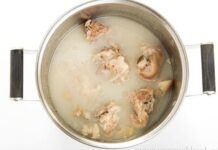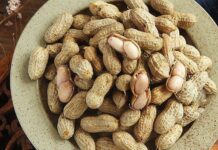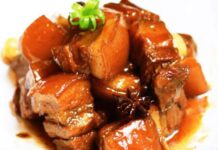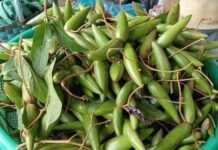Ginger is a moderately sun-loving plant that tolerates shade, so it doesn’t need to be planted in a sunny location. However, ginger does not tolerate waterlogging, so it is important to ensure that the soil has good drainage.
Selecting and Preparing Ginger Rhizomes
There are several varieties of ginger, such as buffalo ginger, dé ginger, and hybrid ginger. Buffalo ginger is commonly cultivated because it produces large rhizomes with less fiber and milder flavor. In addition, dé ginger is also grown in many places. This variety has smaller rhizomes, a spicier taste, and more fiber. Buffalo ginger is typically grown for export, while dé ginger is mostly sold in the domestic market.
When choosing ginger rhizomes, select larger, unblemished ones that are free from damage, mold, or rot. You can also use ginger roots that have already sprouted at home to grow new ginger plants.
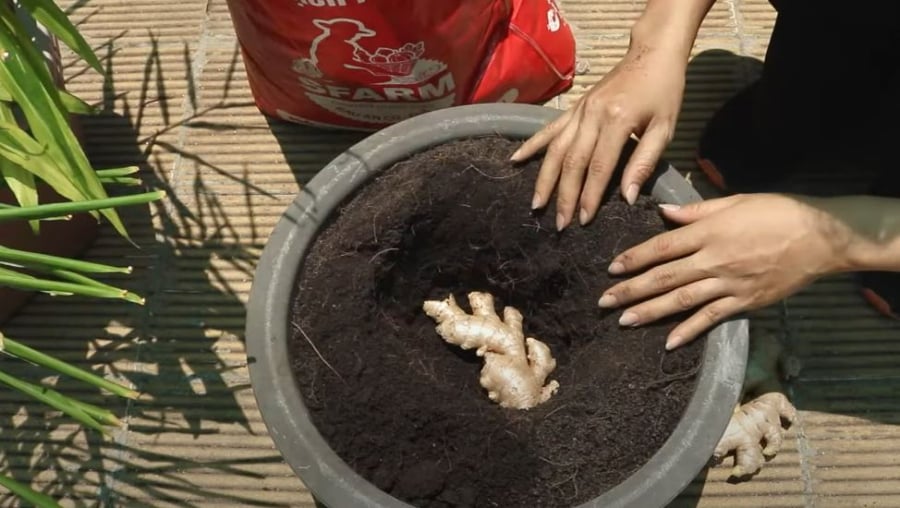
Growing ginger at home is simple, and anyone can do it.
Timing for Planting Ginger
You can plant ginger at any time of the year. However, spring in the North and the onset of the rainy season in the South are the best times to plant ginger. The cooler climate during these periods promotes better growth and development of the ginger plant.
Soil Requirements for Ginger
Ginger is not particular about soil type, but it is advisable to use clean, nutrient-rich soil to ensure healthy growth and reduce pest and disease issues. You can enhance the soil by mixing in earthworm castings and organic matter to improve aeration, drainage, and nutrient availability.
Planting Ginger
First, use a clean knife to cut the initial ginger rhizome into 5-6 portions, depending on the size of the rhizome.
To promote healthy growth and reduce the risk of damage during germination, soak the cut pieces of ginger in a fungicidal solution for about 30 minutes (you can purchase this solution from agricultural supply stores).
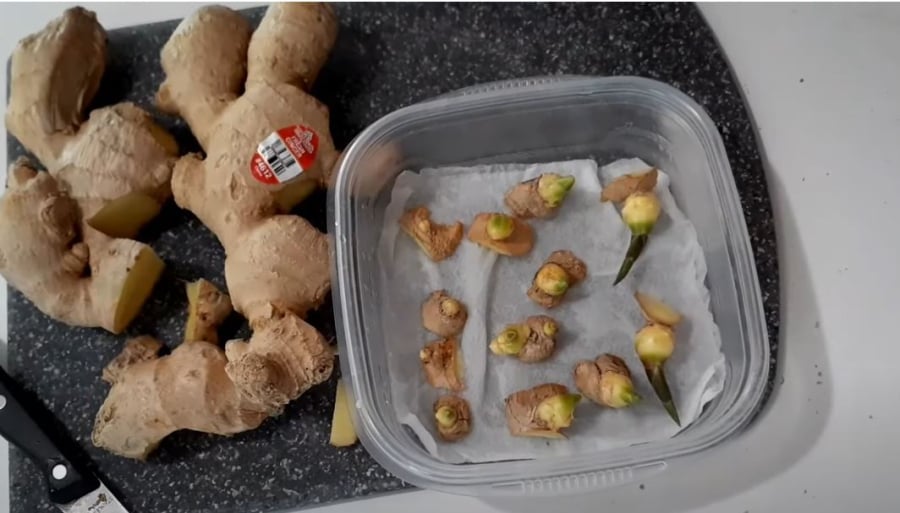
Growing ginger is straightforward. Simply take small pieces of ginger, allow them to sprout, and then bury them in the soil.
Place the cut pieces of ginger in plastic trays with soil, and cover them with a layer of coconut coir. Mist the setup to provide moisture and encourage germination. Within 2-3 weeks, the ginger should sprout.
Once the ginger has sprouted, transfer it to a larger pot, burying it about 2-3 cm deep, with the sprouting end facing up.
Water the plant regularly to keep the soil moist, but avoid overwatering.
Place the pot in a well-ventilated area with access to sunlight to enhance photosynthesis and promote larger rhizomes. Avoid keeping the plant in a windless, dark place, as this will result in stunted growth and smaller rhizomes.
During the rainy season, there is no need to water the plant if the soil is still moist.
Monitor the plant and remove any diseased or infested leaves during the growing process.

Growing ginger requires minimal effort. Simply maintain moisture in the soil and remove any diseased or infested leaves from the ginger plant.
After about 5-6 months of planting, the ginger rhizomes will reach maturity and be ready for harvest. The longer you leave the ginger in the ground, the larger and spicier it will become, but it will also develop more fiber. Depending on your preference, you can harvest young or mature ginger.
With home-grown ginger, you have the option to harvest individual plants as needed or wait until the ginger reaches your desired level of maturity before harvesting and storing it for later use.
The leaves of the ginger plant can also be plucked and used for cooking, steaming, hair rinsing, foot soaking, and more.
The Magic Sprinkle: Keep Your Ginger Fresh for a Year and Beyond
Introducing the ultimate guide to storing ginger root. Are you tired of your ginger going bad before you get a chance to use it? Well, worry no more! We’ve got the top tips and tricks to keep your ginger fresh and flavorful for longer. From freezing to storing in syrup, we’ll reveal the best methods to ensure your ginger stays in tip-top condition.












